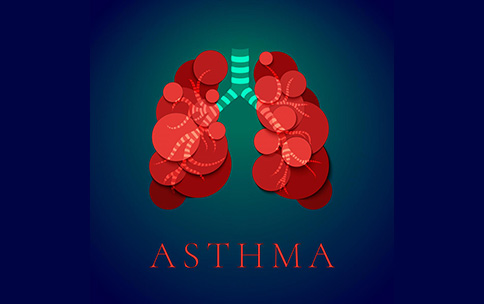
Asthma is a common disease that causes dramatic changes in the lungs. Researchers supported by the Common Fund’s Extracellular RNA Communication program are working on understanding how immune cells traveling through the body use extracellular RNAs (exRNAs) to respond to asthma attacks. ExRNAs can be released by many cell types. They are often packed and protected within carriers called extracellular vesicles (EVs) and transported to distant parts of the body to influence the function of the recipient cell. Understanding how these exRNAs are packaged into EVs and travel through the body holds potential for not only the discovery of basic cell biology principles but also for strategies that can be used for diagnostic and therapeutic advancement.
To understand where exRNAs come from in asthma attacks, ExRNA Communication Program researchers at UCSF analyzed fluid from the lungs of mice before and after exposure to allergens. Using high throughput RNA sequencing and a system to tag biomolecules with fluorescent labels they determined the cell of origin for different types of exRNA traveling in the fluid in both healthy lungs and lungs with allergic airway inflammation. They found increases in specific types of exRNA called microRNAs in EVs in lung fluids following the induction of an allergic response. These changes also mirrored changes in the composition and function of immune cells at the site of tissue inflammation. This study provides more understanding about the origins of specific exRNAs and how they are traveling through the body in asthma attacks. This may potentially aid in the development of diagnostics and therapies in the future.
Reference
In the News
- Destructive ‘telegrams’ in asthma (link is external). VUMC Reporter. January 31, 2019.


